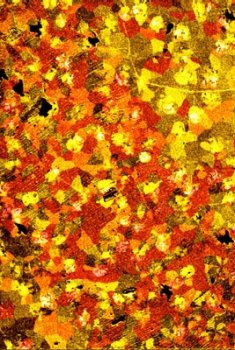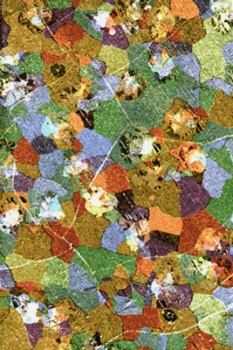(December 27, 2010 – PR Newswire) — S&P Equity Research semiconductor and semiconductor equipment analysts Clyde Montevirgen and Angelo Zino have issued their 2011 forecasts for the industry.
"The year 2010 is expected to close strong for the semiconductor and semiconductor equipment industries, as sales growth for both are forecasted to reach decade highs," said Montevirgen. "Consequently, we anticipate that most chip and equipment companies will experience multi-year high margins and exceptional earnings increases." Added Zino, "While we think there is still some room to grow, we project more modest advances ahead."
They forecast that semiconductor industry sales will rise 7% in 2011. Considering recent forecasts from S&P Economics, research from industry and trade groups, and bottom-up analysis of sales trends for the companies in their coverage universe, the analysts see increasing unit shipments for key end-markets, such as computers, smartphones, and communications. These account for a large percentage of the semiconductor industry’s demand.
They expect industry sales to rise to nearly $320 billion in 2011 from an anticipated $299 billion in 2010. For 2011, semiconductor equipment sales growth should slow; sales will rise less than 10%, after their projection for industry revenues to increase more than two-fold for 2010. Although the industry is experiencing a sharp rebound in sales this year, following an extended period of under-investing by semiconductor manufacturers, the analysts forecast that growth will slow going forward, as companies digest recent capital expenditure purchases. Zino and Montevirgen expect most demand for semiconductor equipment to come from more advanced technology nodes, as well as from larger memory customers and foundries looking to expand capacity.
Memory
They project that capacity purchases will be driven by flash memory manufacturers, such as Toshiba and Samsung, given expectation for stronger demand and tight supply in this sub-industry. Robust unit shipments for smartphones and tablets will be a major catalyst for these manufacturers, which should keep customer profitability at high levels. Unlike Dynamic Random Access Memory (DRAM), which relies heavily on PC demand, the flash memory market depends on a number of different applications and looks to be in better shape than DRAM on a comparative basis. The flash memory industry has emerging technologies, such as solid-state drives (SSDs), which should drive new demand.
The S&P analysts see DRAM segment sales declining in 2011, following projection for a more than doubling in capital spending in 2010. They believe the biggest growth catalyst for the DRAM segment in 2010 has been the transition from DDR2 (double data rate) technology to DDR3 (both DDR2 and DDR3 are types of DRAM chips that are found in personal computers). DDR3 technology is the successor to DDR2 and offers advantages such as lower operating temperatures, greater speed, and reduced power consumption. Now that DDR3 has become mainstream, Montevirgen and Zino do not see any major catalyst boosting segment spending in 2011.
Asia
They forecast that the Asia-Pacific region will make up 55% of semiconductor sales by the end of 2011, and see more semiconductor companies trying to make cost structures more variable by outsourcing manufacturing to third-party foundries. Leading Taiwanese foundries, such as Taiwan Semiconductor manufacturing (TSM 12 ***), have invested heavily in sub 40nm manufacturing processes, which will attract chip companies that do not have the capital to invest in such high-end manufacturing technology. Also assuming softer sales growth and less favorable tax incentives in Europe, as austerity measures continue, they see Asia continuing to gain global share.
Capacity and adjacent markets
They expect the semiconductor industry’s plant utilization rate to be around 90% by the end of 2011. Capacity utilization rates will fall from the current mid-90% range to the mid-to-high 80% range early in 2011, as chipmakers allow excessive inventory in the supply chain to digest. Although the analysts foresee increasing capacity from recent capital expenditures, they believe that seasonal strength and a rebound in end-market demand in the second half will help keep plants busy through the fourth quarter of 2011.
They forecast that the semiconductor industry’s gross margin will widen modestly throughout 2011. Chipmakers will start the new year by burning off excessive inventory, the analysts say, so expect first-quarter gross margins in the low-50% range, given lower plant utilization rates. However, orders will return to more seasonal patterns starting in the second quarter, and margins should expand to the mid-50% area by the end of the year.
Semiconductor equipment manufacturers are moving further into higher-growth, adjacent industries, namely solar, given that the semiconductor equipment industry is in the midst of a long-term secular decline, say Vino and Montevirgen. They believe pursuing new growth avenues makes sense given the similar processes and technology used within both industries. In addition, the solar industry has higher growth opportunities versus the more mature semiconductor industry. Small and large companies will be looking to enter the solar arena, whether organically or through merger and acquisition activity. The analysts expect Advanced Energy Industries (AEIS 14 *****) and Varian Semiconductor Equipment Associates (VSEA 37 ****) to be major beneficiaries of this trend because of their high investment in R&D within this arena.
They think the semiconductor equipment back-end industry (packaging and automatic test equipment) will experience pressure to consolidate, given the segment’s lower growth rates, high fixed costs, and lower profitability relative to other areas of the supply chain. Further consolidation of test equipment companies would facilitate cost savings through economies of scale and drive more effective factory utilization.
Intel (INTC)
The analysts also predict that Intel (INTC 21 ****) will finally gain some traction in the handset and tablet markets. With Intel’s proposed acquisition of Infineon’s wireless business unit (expected in early 2011), Intel will instantly become a formidable competitor in the baseband segment of the handset market. Intel will successfully be able to cross-sell its Atom processor with the baseband chips, and Montevirgen and Vino expect even more progress once it creates a single chip solution that integrates both functions. Additionally, they believe that Atom will find some success in the lower-end segment of the tablet market.
Standard & Poor’s licenses its research to global institutions for their investors and advisors. Standard & Poor’s team of experienced U.S., European and Asian equity analysts use a fundamental, bottom-up approach to assess a global universe of multi-asset class securities across industries worldwide. Follow Standard & Poor’s equity analysts’ U.S. market commentary each day at http://www.equityresearch.standardandpoors.com/.
The equity research reports and recommendations provided by Standard & Poor’s Equity Research Services are performed separately from any other analytic activity of Standard & Poor’s. Standard & Poor’s Equity Research Services has no access to non-public information received by other units of Standard & Poor’s. Standard & Poor’s does not trade for its own account. The analytical and ethical conduct of Standard & Poor’s equity analysts is governed by the firm’s Research Objectivity Policy, a copy of which may also be found at www.standardandpoors.com or by clicking here.
All information provided by Standard & Poor’s is impersonal and not tailored to the needs of any person, entity or group of persons. Past performance is no indication of future results. Standard & Poor’s and its affiliates provide a wide range of services to, or relating to, many organizations, including issuers of securities, investment advisers, broker-dealers, investment banks, other financial institutions and financial intermediaries, and accordingly may receive fees or other economic benefits from those organizations, including organizations whose securities or services they may recommend, rate, include in model portfolios, evaluate or otherwise address.
This material is not intended as an offer or solicitation for the purchase or sale of any security or other financial instrument. Securities, financial instruments or strategies mentioned herein may not be suitable for all investors. Any opinions expressed herein are given in good faith, are subject to change without notice, and are only correct as of the stated date of their issue. Prices, values, or income from any securities or investments mentioned in this report may fall against the interests of the investor and the investor may get back less than the amount invested. Where an investment is described as being likely to yield income, please note that the amount of income that the investor will receive from such an investment may fluctuate. Where an investment or security is denominated in a different currency to the investor’s currency of reference, changes in rates of exchange may have an adverse effect on the value, price or income of or from that investment to the investor. The information contained in this report does not constitute advice on the tax consequences of making any particular investment decision. This material does not take into account your particular investment objectives, financial situations or needs and is not intended as a recommendation of particular securities, financial instruments or strategies to you nor is it considered to be investment advice. Before acting on any recommendation in this material, you should consider whether it is suitable for your particular circumstances and, if necessary, seek professional advice.
This material is based upon information that we consider to be reliable, but neither S&P nor its affiliates warrant its completeness, accuracy or adequacy and it should not be relied upon as such. With respect to reports issued to clients in Japan and in the case of inconsistencies between the English and Japanese version of a report, the English version prevails. With respect to reports issued to clients in German and in the case of inconsistencies between the English and German version of a report, the English version prevails. Neither S&P nor its affiliates guarantee the accuracy of the translation. Assumptions, opinions and estimates constitute our judgment as of the date of this material and are subject to change without notice. Neither S&P nor its affiliates are responsible for any errors or omissions or for results obtained from the use of this information. Past performance is not necessarily indicative of future results.
Copyright 2010 PR Newswire Association LLC All Rights Reserved
Subscribe to Solid State Technology/Advanced Packaging.
Follow Solid State Technology on Twitter.com via editors Pete Singer, twitter.com/PetesTweetsPW and Debra Vogler, twitter.com/dvogler_PV_semi.
Or join our Facebook group
 January 11, 2011 — Though single-exposure patterning schemes are unable to meet 22nm specifications, advanced patterning technologies using ArF immersion allow us to continue shrinking critical dimensions in semiconductor devices. However, the use of ArF immersion at 22nm requires multi-step patterning processes and elaborate pitch-doubling schemes such as litho-etch-litho-etch (LELE) and self-aligned double-patterning (SADP) technologies. Although these technologies are more costly than any single-exposure process, they persist as a standard patterning solution for today’s 22nm device architectures in the absence of viable alternatives.
January 11, 2011 — Though single-exposure patterning schemes are unable to meet 22nm specifications, advanced patterning technologies using ArF immersion allow us to continue shrinking critical dimensions in semiconductor devices. However, the use of ArF immersion at 22nm requires multi-step patterning processes and elaborate pitch-doubling schemes such as litho-etch-litho-etch (LELE) and self-aligned double-patterning (SADP) technologies. Although these technologies are more costly than any single-exposure process, they persist as a standard patterning solution for today’s 22nm device architectures in the absence of viable alternatives.


